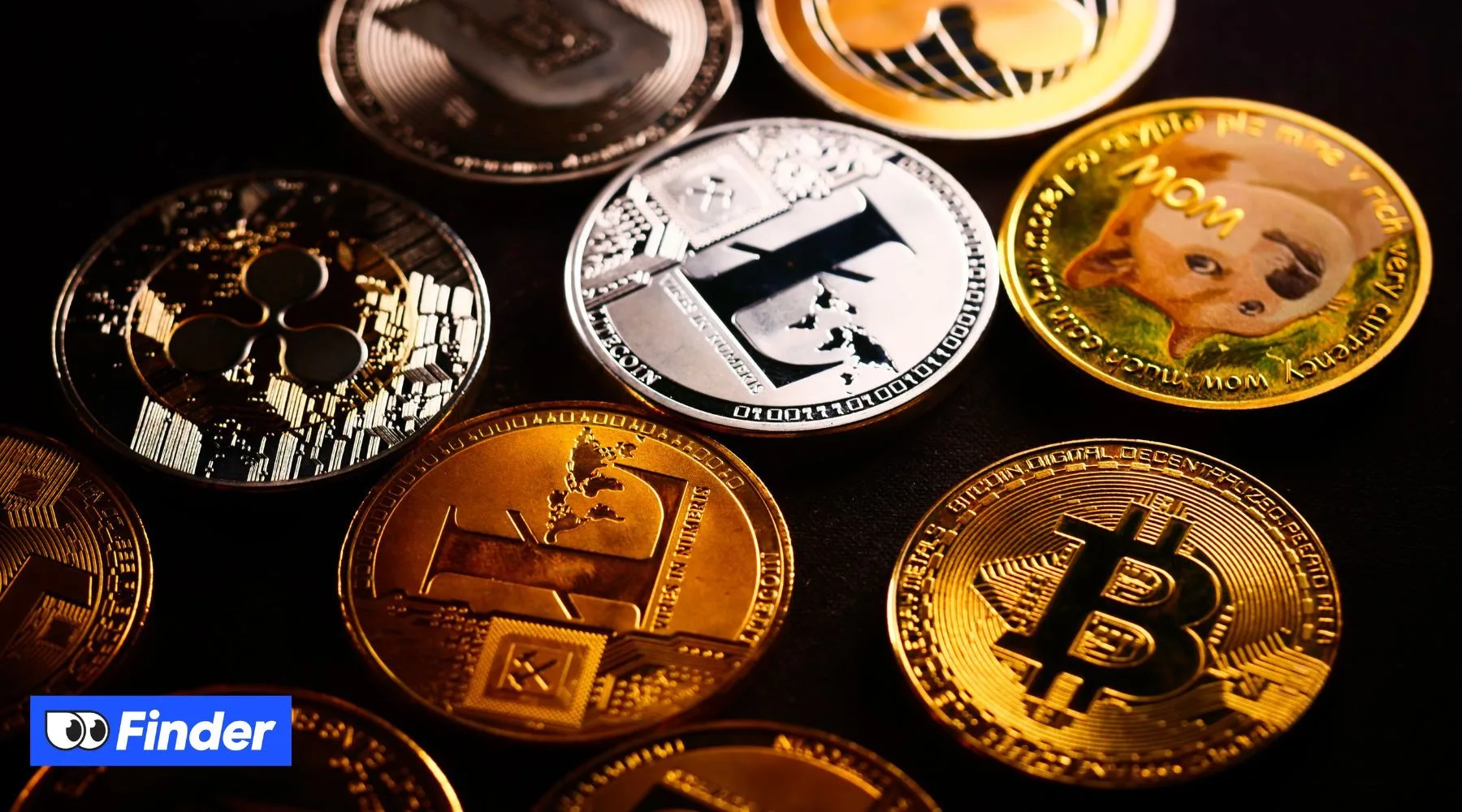5 essentials for your crypto investment journey

Whether you're new to crypto or looking to take your investing to the next level, you need the right tools and knowledge to enhance your skills
 Sponsored by Coinstash. Since 2017, Coinstash has been helping more than 38,000 Australians invest in cryptocurrency. With more than 1,000 cryptocurrencies available and built-in DeFi technology, Coinstash makes it easy to build and manage your crypto portfolio. To find out how you can get started, make sure to visit the Coinstash website.
Sponsored by Coinstash. Since 2017, Coinstash has been helping more than 38,000 Australians invest in cryptocurrency. With more than 1,000 cryptocurrencies available and built-in DeFi technology, Coinstash makes it easy to build and manage your crypto portfolio. To find out how you can get started, make sure to visit the Coinstash website.
No matter where you are in your crypto investing journey, there are some fundamentals that crypto enthusiasts should have in place to enhance your skill set – and potentially grow your returns.
1. Build a portfolio
First things first – investing in cryptocurrency and building an investment portfolio involves more than just buying some Bitcoin and holding onto it indefinitely.
Traders and investors will typically build a portfolio of a range of different crypto assets. Generally, this is done via an exchange platform like Coinstash.
Your trading platform should allow you to buy, sell and trade across a variety of different kinds of cryptocurrencies.
For example, Coinstash allows you to trade across more than 1,000 different types of cryptocurrency – which according to Finder research, is more than 5 times the average for exchanges in Australia. Users also get exclusive early access to new coins before they are listed on other exchanges.
Some of the other major coins beyond Bitcoin available through Coinstash include:
- Ethereum (ETH): Arguably the most popular cryptocurrency after Bitcoin, Ethereum has attracted considerable attention for its ability to host numerous applications. It's particularly valued for its ability to host smart contracts.
- Ripple (XRP): Known for its speedy transfers (and by extension, lower transfer costs), Ripple has quickly established itself as a significant player within the cryptocurrency market.
- Solana (SOL): Launched in 2020, Solana has emerged as an accessible, low-cost competitor to Ethereum. It's also becoming well-established with a lot of crypto users.
You don't need to be an expert on every individual coin on the market. There are some strategies to help you narrow down your choices:
- Consider what problem the project aims to solve, and its usefulness. For example, numerous cryptocurrencies have attempted to solve speed issues associated with the Blockchain and help create faster transfers in the process.
- Check if the project's values align with your own. The Australian government has a handy guide for spotting potentially problematic cryptocurrencies.
- Think about your investment goals, risk tolerance, and time horizon. How well does a particular cryptocurrency align with your current investment plan? As with any investment, never invest more than you can afford to lose.
- Look at the asset's ranking and read its white paper for more information. This can help provide further insights into its alignment with your values and investment goals.
- Pay attention to price history, liquidity, and trading volume. Although past results are not necessarily an indicator of future results, considering these factors can provide insights into a cryptocurrency's investment viability.
By keeping these factors in mind, you can make more informed decisions about your cryptocurrency investments.
Once you've built a portfolio, what's the next step?
Learn more about investing in crypto with Coinstash
2. Diversification
Though cryptocurrencies are relatively new tech, the basic principles of investing still apply. So just like other areas of investment, diversification is an important tool for managing risk and reducing portfolio volatility.
Anyone with even a passing interest in crypto over the last few years will have noticed the peaks and valleys, as well as the influence of wider market and pop culture trends.
But as with any other asset, these don't affect all cryptocurrencies equally. When one is experiencing a boom, another will be having a quiet period – and vice versa!
Of course, diversifying can be easier said than done – especially for the novice investor. Given the amount of cryptocurrencies on the market, it can require extensive research to diversify manually.
This is where features like Coinstash Bundles can be useful. Coinstash Bundles can be used to start the diversification of your portfolio. These Bundles allow you to purchase a range of cryptocurrencies in a single transaction.
For example, you might choose to focus on the Top 10 bundle, which highlights the top-performing coins currently in the market. Or you might opt for something a bit cheekier with the Meme Coins bundle – there is a huge range to select from, each with its own focus.
3. DeFi
Decentralised Finance (DeFi) trading offers an alternative to conventional exchange trading by enabling people to trade cryptocurrencies through Dapps and platforms built on blockchain technology. It cuts out the middleman without sacrificing the integrity of the transaction.
Unlike traditional exchanges, decentralised exchanges operate without a central authority. They provide several benefits, including early access to cryptocurrencies before they're listed on centralised exchanges. You're also able to ensure increased privacy since transactions occur directly between users without intermediaries.
But this isn't necessarily easy to do on your own. Navigating the complexities of DeFi trading can be daunting, as it typically requires a fundamental understanding of crypto technology, along with the use of multiple wallets and applications.
However, there are alternatives available that allow you to enjoy most of the benefits of DeFi trading without needing to commit your own time and resources. For example, Coinstash features a built-in DeFi aggregator on their platform, allowing you to trade DeFi tokens from the Coinstash app.
This unique feature allows Coinstash to list coins before they are available on other exchange platforms, which can help give you an edge on the market.
4. OTC Trading
For many traders and investors, navigating the complexities of traditional exchanges can be overwhelming. Others may simply prefer a more hands-on approach, akin to traditional broker trading.
Over-the-counter (OTC) trading offers a viable alternative for experienced investors. It's often the preferred method for sophisticated traders and investors making large transactions.
OTC trading involves directly trading cryptocurrencies between two parties, without using the public order books of traditional exchanges. These transactions are typically mediated by a crypto OTC desk, which acts as a matchmaker between buyers and sellers.
Opting for an OTC trading desk, like the Coinstash OTC desk, can provide significant advantages, including access to deeper liquidity, competitive pricing and personalised broker support tailored to meet individual needs.
However, it's important to remember that there is still risk involved and it is recommended for experienced investors only. It's always worth consulting with a financial professional before attempting OTC trading.
5. Entity Account Trading
Investing in crypto doesn't have to be solely for your personal investment. You can also invest in crypto using different entities, such as your company, trust, or self-managed super fund (SMSF).
The process for doing so is similar to investing personally. You will need to sign up to a platform and provide the necessary documents to verify your entity.
Creating an SMSF to manage your retirement savings is an important decision, and advice should be sought from a licensed financial adviser prior to doing so. As the trustee, you'll ultimately have responsibility for the performance of your SMSF.
An SMSF is subject to a range of rules around investment and taxation. Crypto investment – and any investment, for that matter – must be permitted by the trust deed of the fund. You must also be able to clearly demonstrate that investing in cryptocurrency is in line with the investment strategy of the SMSF.
You can also read a more detailed rundown of the considerations at the ASIC website.
A licensed financial adviser can provide tailored advice, ensuring your investment strategy aligns with your investment goals and risk tolerance, and complies with regulatory requirements.
Once verified, buying and selling cryptocurrencies can be done in a similar fashion to your personal account.
What's more, platforms like Coinstash allow you to manage all your personal and entity accounts under one roof. You can effortlessly switch between these accounts within your profile.
Coinstash also offers one-to-one onboarding calls to answer all your questions and ensure the setup of your entity account is smooth and straightforward.
Start investing with Coinstash today
Compare other products
We currently don't have that product, but here are others to consider:
How we picked theseDisclaimer: Cryptocurrencies are speculative, complex and involve significant risks – they are highly volatile and sensitive to secondary activity. Performance is unpredictable and past performance is no guarantee of future performance. Consider your own circumstances, and obtain your own advice, before relying on this information. You should also verify the nature of any product or service (including its legal status and relevant regulatory requirements) and consult the relevant Regulators' websites before making any decision. Finder, or the author, may have holdings in the cryptocurrencies discussed.
